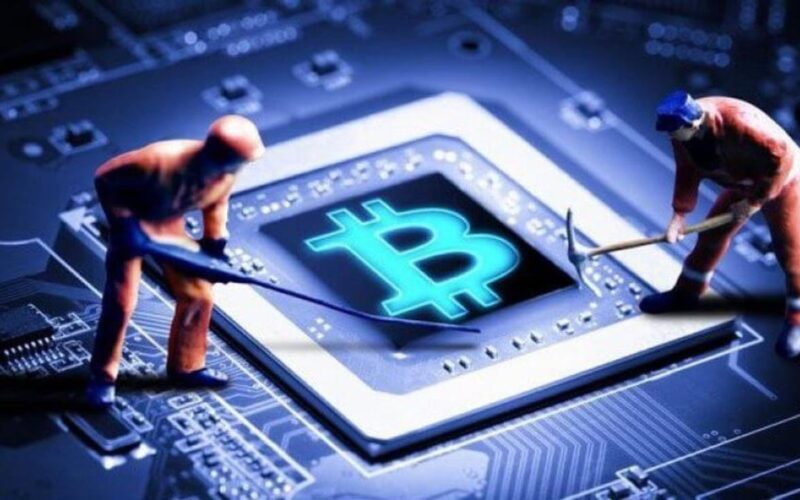Cryptocurrency mining is meticulous, exorbitant and just inconsistently fulfilling. In any case, mining has an attractive interest for some, financial specialists keen on cryptocurrency due to the way that excavators are compensated for their work with crypto tokens. This might be on the grounds that pioneering types consider mining to be pennies from paradise, similar to California gold miners in 1849. What’s more, in the event that you are innovatively disposed, why not do it?
Notwithstanding, before you contribute the time and gear, perused this explainer to see in the case of digging is truly for you. We will zero in essentially on Bitcoin (all through, we’ll use “Bitcoin” when alluding to the organization or the cryptocurrency as an idea, and “bitcoin” when we’re alluding to a number of individual tokens).
The essential draw for some Bitcoin excavators is the possibility of being compensated with important bitcoin tokens. All things considered, you positively don’t need to be an excavator to possess cryptocurrency tokens. You can likewise purchase cryptographic forms of money utilizing fiat cash; you can exchange it on a trade like Bitstamp utilizing another crypto (for instance, utilizing Ethereum or NEO to purchase bitcoin); you even can gain it by playing computer games or by distributing blog entries on stages that pay clients in cryptocurrency.
A case of the last is Steemit, which is somewhat similar to Medium aside from that clients can compensate bloggers by paying them in an exclusive cryptocurrency called STEEM. STEEM would then be able to be exchanged somewhere else for bitcoin.
The bitcoin reward that diggers get is an impetus that persuades individuals to aid the basic role of mining: to help, legitimize and screen the Bitcoin organization and its blockchain. Since these obligations are spread among numerous clients everywhere on the world, bitcoin is supposed to be a “decentralized” cryptocurrency or one that doesn’t depend on a national bank or government to manage its guideline.
Table of Contents
Key Takeaways
By mining, you can win cryptocurrency without putting down cash for it.
Bitcoin excavators get bitcoin as a prize for finishing “blocks” of checked exchanges which are added to the blockchain.
Mining rewards are paid to the excavator who finds an answer for a complex hashing puzzle first, and the likelihood that a member will be the one to find the arrangement is identified with the bit of the all out mining power on the organization.
Twofold spending is a marvel where a bitcoin client unlawfully spends similar tokens twice.
You need either a GPU (designs handling unit) or an application-explicit coordinated circuit (ASIC) so as to set up a mining rig.
What Coin Miners Actually Do
Diggers are getting paid for their work as evaluators. They are accomplishing crafted by confirming past bitcoin exchanges. This show is intended to keep Bitcoin clients fair and was brought about by bitcoin’s originator, Satoshi Nakamoto. By confirming exchanges, diggers are assisting with forestalling the “twofold spending issue.”
Twofold spending is a situation wherein a bitcoin proprietor unlawfully spends the equivalent bitcoin twice. With physical money, this isn’t an issue: when you hand somebody a $20 note to purchase a jug of vodka, you no longer have it, so there’s no peril you could utilize that equivalent $20 greenback to purchase lotto tickets nearby.
With computerized cash, nonetheless, as the Investopedia word reference clarifies, “there is a danger that the holder could make a duplicate of the advanced token and send it to a dealer or another gathering while at the same time holding the first.”
Suppose you had one genuine $20 greenback and one fake of that equivalent $20. If you somehow happened to attempt to spend both the genuine bill and the phony one, somebody that took the difficulty of taking a gander at both of the bills’ sequential numbers would see that they were a similar number, and hence one of them must be bogus.
What a bitcoin digger does is undifferentiated from that—they check exchanges to ensure that clients have not misguidedly attempted to spend the equivalent bitcoin twice. This is definitely not an ideal relationship—we’ll clarify in more detail underneath.
When an excavator has checked 1 MB (megabyte) worth of bitcoin exchanges, known as a “block,” that digger is qualified to be remunerated with an amount of bitcoin (more about the bitcoin award underneath also).
The 1 MB limit was set by Satoshi Nakamoto, and involves contention, as certain excavators accept the square size ought to be expanded to oblige more information, which would viably imply that the bitcoin organization could measure and check exchanges all the more rapidly.
Note that checking 1 MB worth of exchanges makes a coin digger qualified to win bitcoin—not every person who confirms exchanges will get paid out.
1MB of exchanges can hypothetically be as little as one exchange (however this isn’t at all normal) or a few thousand. It relies upon how much information the exchanges take up.
“So after such work of checking exchanges, I may in any case not get any bitcoin for it?”
That is right.
To win bitcoins, you have to meet two conditions. One involves exertion; one involves karma.
1) You need to confirm ~1MB worth of exchanges. This is the simple part.
2) You must be the principal digger to show up at the correct response to a numeric issue. This cycle is otherwise called a confirmation of work.
“I’m not catching your meaning, ‘the correct response to a numeric issue’?”
The uplifting news: No serious math or calculation is included. You may have heard that diggers are taking care of troublesome numerical issues—that is not actually obvious. What they’re really doing is attempting to be the primary digger to think of a 64-digit hexadecimal number (a “hash”) that is not exactly or equivalent to the objective hash. It’s an essential mystery.
The awful news: It’s mystery, yet with the all out number of potential conjectures for every one of these issues being on the request for trillions, it’s amazingly burdensome work. So as to tackle a difficult first, excavators need a ton of figuring power. To mine effectively, you have to have a high “hash rate,” which is estimated regarding megahashes every second (MH/s), gigahashes every second (GH/s), and terahashes every second (TH/s).
That is a considerable number hashes.
In the event that you need to assess how much bitcoin you could mine with your mining apparatus’ hash rate, the site Cryptocompare offers a supportive adding machine.
Mining and Bitcoin Circulation
Notwithstanding covering the pockets of diggers and supporting the bitcoin biological system, mining fills another fundamental need: It is the best way to deliver new cryptocurrency into flow. At the end of the day, excavators are fundamentally “stamping” cash. For instance, as of Nov. 2019, there were around 18 million bitcoins in circulation.1 Aside from the coins stamped through the beginning square (the absolute first square, which was made by organizer Satoshi Nakamoto), each and every one of that bitcoin appeared on account of excavators.
Without excavators, Bitcoin as an organization would in any case exist and be usable, however, there could never be any extra bitcoin. There will in the long run come when bitcoin mining closes; per the Bitcoin Protocol, the complete number of bitcoins will be topped at 21 million.2 However, on the grounds that the pace of bitcoin “mined” is diminished after some time, the last bitcoin won’t be coursed until around the year 2140.
Beside the present moment bitcoin result, being a coin digger can give you “casting a ballot” power when changes are proposed in the Bitcoin network convention. At the end of the day, an effective digger has an impact on the dynamic cycle on such issues as forking.
How Much a Miner Earns
The awards for bitcoin mining are divided at regular intervals or somewhere in the vicinity. When bitcoin was first mined in 2009, mining one square would acquire you 50 BTC. In 2012, this was split to 25 BTC. By 2016, this was split again to the current degree of 12.5 BTC. In around 2020, the prize size will be divided again to 6.25 BTC. As of the hour of composing, the compensation for finishing a square is 12.5 Bitcoin.
In November of 2019, the cost of Bitcoin was about $9,300 per bitcoin, which means you’d gain $116,250 (12.5 x 9,300) for finishing a block.3 Not an awful motivator to take care of that intricate hash issue nitty gritty above, it may appear.
Bitcoin Mining Rewards
In the event that you need to monitor exactly when these halvings will happen, you can counsel the Bitcoin Clock, which refreshes this data continuously. Strikingly, the market cost of bitcoin has, since its commencement, would in general relate near the peripheral expense of mining a bitcoin.
In the event that you are keen on perceiving the number of squares have been mined up to this point, there are a few locales, including Blockchain.info, that will give you that data continuously.
Gear Needed to Mine
Albeit right off the bat in bitcoin’s history people may have had the option to seek blocks with a standard at-home PC, this is not true anymore. The explanation behind this is the trouble of mining bitcoin changes after some time. So as to guarantee the smooth working of the blockchain and its capacity to measure and check exchange, the Bitcoin network intends to have one square delivered like clockwork or thereabouts. Be that as it may, if there are 1,000,000 mining rigs contending to take care of the hash issue, they’ll probably arrive at an answer quicker than a situation in which 10 mining rigs are chipping away at a similar issue.
Therefore, Bitcoin is intended to assess and modify the trouble of mining each 2,016 squares, or generally at regular intervals. When there is all the more processing power altogether attempting to dig for bitcoin, the trouble level of mining increments so as to keep block creation at a steady rate. Less registering power implies the trouble level abatements. To get a feeling of exactly how much figuring power is included, when Bitcoin dispatched in 2009 the underlying trouble level was one. As of Nov. 2019, it is in excess of 13 trillion.
The entirety of this is to state that, so as to mine seriously, diggers should now put resources into amazing PC gear like a GPU (designs handling un


